August 19, 2025
 by Soundarya Jayaraman / August 19, 2025
by Soundarya Jayaraman / August 19, 2025

Your social media posts shouldn’t just get likes. They should get sales.
Surprised? Don’t be.
Social commerce sales are projected to reach $1.2 trillion globally by 2025, and it’s not hard to see why. Over 5.7 billion people use social media daily. Think about it: how many times have you discovered a product on Instagram, tapped a tag, and checked out in minutes? Or watched a TikTok livestream and felt that urge to “buy now” before the deal ended?
That’s different types of social commerce in action, the act of selling products through social media channels, whether through posts, comments, chatbots, forums, or any other means.
The main types of social commerce include social network-driven sales (e.g., Facebook Shops), peer-to-peer platforms (e.g., Poshmark), group buying (e.g., Groupon), influencer commerce, livestream shopping, and messaging commerce through apps like WhatsApp. Each model uses social interaction to drive product discovery and purchases.
For e-commerce brands chasing higher conversion rates, marketers under pressure to prove ROI, and startups looking to scale without ballooning ad spend, this isn’t a trend to watch; it’s a channel already outperforming traditional ads when it comes to speed from engagement to purchase.
For a business already investing in social media marketing, social commerce is the natural next layer, turning engagement into measurable sales without forcing customers to leave the app.
In this guide, we’ll break down the five main types of social commerce, from shoppable posts to influencer-driven sales, so you can see which formats work best for your audience and how to use the different social commerce platforms and tools to boost conversions.
Social commerce shows up in a few different ways, each with its own strengths and best-fit scenarios. Here’s a quick look at the five main types so you can spot which ones might work best for your brand before we explain them in more detail.
| Types | How it works | Best for | Key platforms |
| Chat commerce | Customers buy directly via messaging apps or chatbot flows | High-ticket items, personalized selling | WhatsApp, Facebook Messenger, Instagram DM |
| Shoppable posts and stories | Tag products in posts, reels, or stories | Visual products, impulse buys | Instagram, Facebook, Pinterest, Snapchat |
| Livestream shopping | Live product demos with real-time checkout | New launches, limited drops | TikTok Live, YouTube Live, Instagram Live, Amazon Live |
| User-generated content (UGC) | Share customer photos/videos with product links | Trust building, community marketing | Instagram, TikTok, Facebook |
| Interactive quizzes | Customers answer questions for tailored product recommendations | Beauty, fashion, health | Brand site, Instagram Stories polls |
Let’s examine each one in more detail, using real-world examples and the platforms that make them work.
If you’re still treating your DMs as a customer service afterthought, you’re missing one of the biggest sales opportunities in social commerce. Chat commerce, also called conversational commerce, lets customers browse, ask questions, and even check out without leaving their favorite messaging apps.
And here’s the kicker: 89% of U.S. millennials say they want to do business via chat. That means your next sale could literally start with a “Hey, is this in stock?” message. Whether it’s a live agent, automated chatbot, or a mix of both, the goal is to provide quick, personalized assistance that moves shoppers from interest to checkout in a single conversation.
A skincare brand runs a Facebook ad for its new serum with a “Message us to shop” button. When a shopper clicks, a Messenger chatbot greets them, asks about their skin concerns, and recommends the right product from the range. The shopper can complete the purchase right in the chat without ever leaving Facebook.
If you are already running ads or building a following on Instagram, Facebook, TikTok, or Pinterest, shoppable posts and stories are not just a nice upgrade – they are one of the fastest ways to turn engagement into tracked revenue. Instead of losing buyers to “link in bio” clicks or website drop-off, product tags let you sell directly inside the content that is already getting likes, comments, and shares.
For brands in visual-first categories like apparel, beauty, and homedécor, this is where social content stops being just marketing and starts being a storefront, one tap from discovery to purchase, without breaking the buying flow. And it is not just static images anymore. Shoppable videos on TikTok, Instagram Reels, and Pinterest Idea Pins let you combine product demos with instant purchase links, making it even easier to capture impulse buys.
A beauty brand films a TikTok tutorial featuring a new lipstick shade. As the creator applies it, a shoppable product link appears on screen. Viewers can tap and buy the exact shade while still watching the video.
If home shopping TV channels like QVC had a 2025 upgrade, it would be livestream shopping. In the United States alone, around 49 million consumers will use live commerce in 2025, with that number expected to pass 60 million within three years. In Asian countries like China, the figure is even higher.
The format is similar: you showcase products, answer questions, and offer special deals. But now it all happens on platforms like TikTok Live, Instagram Live, and YouTube, where your audience is already spending time.
The difference? Viewers can comment, ask questions, and get answers in real time, and they can purchase instantly without leaving the stream. It is interactive, personal, and built for the kind of instant gratification today’s shoppers expect.
A home décor brand hosts a TikTok Live to reveal its new holiday collection. The host decorates a space in real time while answering styling questions from viewers. Shoppable links for each featured product appear on screen, letting viewers purchase instantly without leaving the stream.
When your customers post photos, videos, or reviews about your products, that is not just free publicity, it is sales fuel. User-generated content (UGC) selling is about turning those authentic customer moments into shoppable experiences. Instead of telling people how great your product is, you let real buyers show them. They’re a real customer, happy enough to create something thanking you on their own, and it comes off genuine.
Because the content comes from a peer, not a brand, it builds trust fast. Shoppers are more likely to believe someone who has actually used the product, especially when they can see and shop it in the same post.
Those are all the right moves for building a community. Beyond the sales side of things, you also get to make a very big, public “thank you!” to customers. You show appreciation and spread some love.
For SaaS brands, that often means showcasing reviews, ratings, and testimonials on platforms like G2 as part of your social commerce strategy. Sharing a clip of a customer praising your product’s ease of use, or a G2 badge highlighting your category leadership, can have the same trust-building effect as a lifestyle brand reposting a customer photo.
A project management SaaS brand reposts a G2 review graphic on LinkedIn, highlighting their “Easiest to Use” award, linking the post directly to their free trial sign-up page.
Interactive quizzes turn shopping (or software selection) into a guided, personalized experience. Instead of making buyers sift through endless options, you ask a few targeted questions and recommend the right fit, whether that is the perfect lipstick shade or the best CRM for their team size.
For physical products, quizzes can match customers with items based on style, needs, or preferences. For SaaS, they can qualify leads, recommend the right pricing tier, or direct users to the features most relevant to their goals.
A skincare brand uses an Instagram Stories quiz to match users to their ideal routine, then links to each product with in-app checkout.
Sometimes, seeing is believing. So, let’s check out five of the best social commerce examples that we’ve come across lately. They’ll inspire you and point out some new things to try. While these might be efforts from large brands, they’re something that even small companies can emulate.
Warby Parker uses UGC well on Instagram and has some photos that continually crop up when searching for this type of content. Here’s one of our favorites:
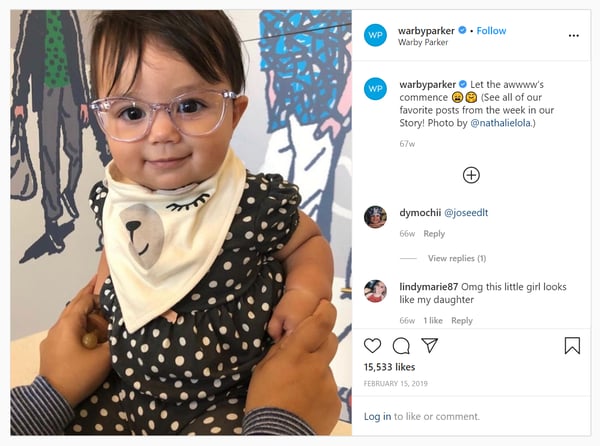
Not only is she adorable, but Warby Parker credits the original user, too. It’s good practice and a great way to engage their audience. They also capture content from their Twitter feed and share it on Instagram, too, keeping branding and engagement going strong across multiple channels with the same piece of UGC.
The company also creates video campaigns around hashtags, products, and promotions. The best of these take user-submitted content to make their case.
The #StayAtHomeTryOn campaign makes it easy for their customers to stay engaged while also keeping the lights on. Again, it feels like the brand is as simple as asking people to share their videos and then collecting them, repackaging, and re-sharing for greater reach.
Many brands now host giveaways on social for customers to win free products and promote the brand simultaneously. Usually, they have specific requirements like following a brand, retweeting a post, or liking some content. They’ve been around for a while, but are always popular.
It’s a good way to grow your audience, too, by having a follow be part of your offer. What’s even better is to ask people to do something with your specific post (this builds on the UGC mentioned above).
Here’s a perfect example from Bridgestone Golf:

The image itself is interesting and exciting to its audience. The ask is simple, and you can keep trying until you succeed. Plus, you’ve got to follow and retweet for an entry. That’s a lot of lift and expansion from a post they made – not an ad they placed!
You can lean into the “social” part of this selling, too, by working with influencers for the giveaways. Find someone who has a following for your product and partner with them to take a specific action and be eligible for a chance to win something.
This is huge in the video game space, where companies partner with popular streamers. They ask the audience to watch the streamer play a game and then give away a copy of that specific game.

These streams create and sustain interest in the product, while the viewers have a person to ask questions to or interact with and be part of a community. The positive experience of the stream gets associated with your product, too. In many cases, they only need to give away two copies (one to the streamer and one to the contest winner) while picking up a lot of potential sales opportunities.
People trust user reviews more than your ads. So, use them instead of ads! User reviews and testimonials are perfect for places where you need something to showcase how great you are, but don’t want to do the bragging yourself. Think of times you want to tell people that you have fast shipping and fulfillment, long-lasting products, that they work great, or that they do a surprisingly good job.
That last one is a favorite of ours, especially this example from the Poo-Pourri homepage:
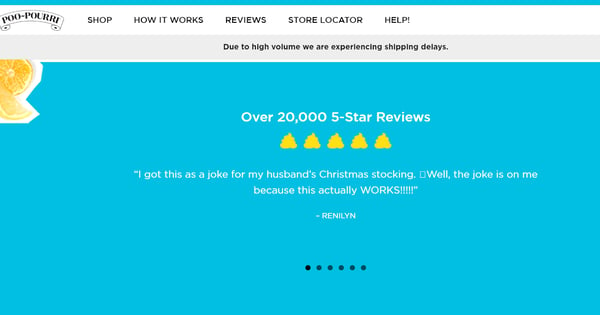
Silly is their mantra, and this helps the brand shine.
There are also ample opportunities to use testimonials as specific types of proof. Snap Kitchen does this well on its homepage with a set of three reviews that discuss its claims for losing weight, making healthy changes, and being affordable:
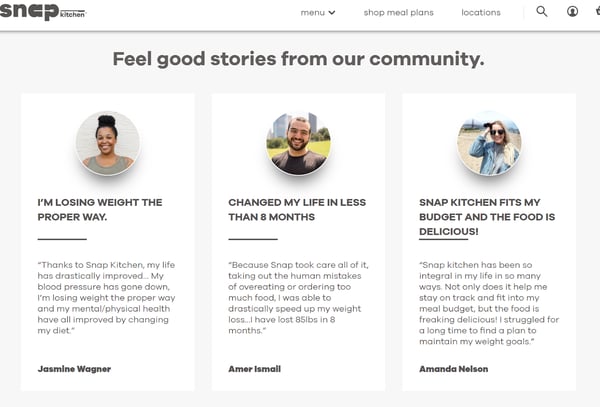
Visitors with a specific goal can see this and immediately start believing that Snap can deliver. It’s a powerful blend of product quality as well as how much customers love the product.
If you’re on the B2B side of commerce, you can also leverage your Net Promoter Score (NPS), which has become an industry standard for company reviews and recommendations.
One tactic you can use for social commerce is getting proof and influence from users and stars. This is an indirect selling technique, but it is extremely common. Just think about how almost every podcast you’ve heard at some point was sponsored by Squarespace or Skillshare.
We’re going a slightly different route, however, with social proof in the form of unboxing! This is an extremely popular YouTube phenomenon that generates millions of views each month. What your brand wants to do is find someone willing to open up your product and talk about it, sharing genuine feelings and surprise.
The example we’re highlighting is the Kinder Beauty Box being reviewed by Andréa Matillano. In it, Matillano discusses why she supports the brand specifically and how she shares its values. The video highlights the quality of the products but also builds brand trust because of the trust viewers have in Matillano. Kinder picked just about the perfect influencer to help spread its message here.
The final tactic we’ll review is those quizzes people take to find their perfect fit product, or what '90s child actor they are. It’s fun, easy to share, and informative. When done right for products, people walk away trusting the results. They will need some brand recognition and trust – either from the products or the company creating the quiz – to make those purchase decisions.
Makeup is inherently personal because looking great can depend on your skin, coloring, shape, hair, and more. So, skincare is personal, too. Allure is emphasizing this with a high-quality skin-care routine quiz on its website. When we asked around about social quizzes – an unscientific but useful poll because word-of-mouth is a strong seller – this one was mentioned the most overall and the most directly by name.
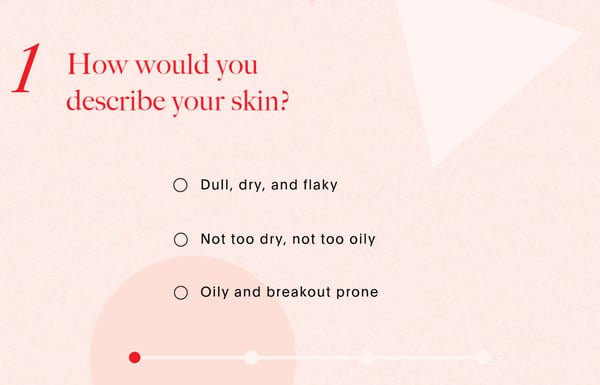
The quiz gets things right by being just four questions long, and they’re all easy to understand and select. What you might like most, however, are the results. Allure provides a four-step system and makes multiple suggestions based on price point.
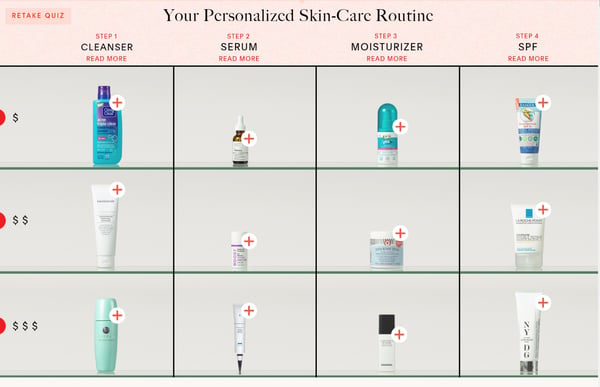
Click on the product, and you get product details and selling points plus the price.
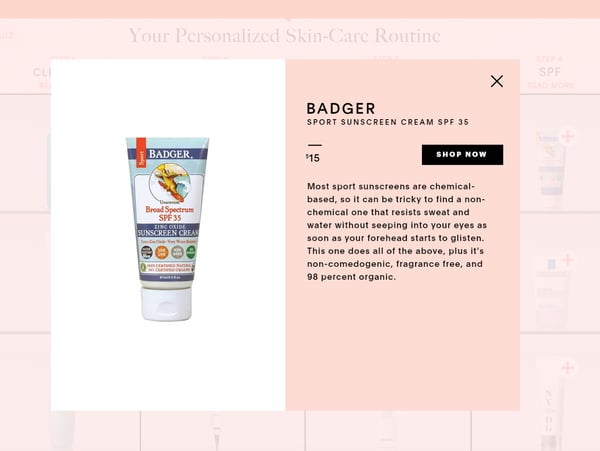
A “shop now” button will then take you directly to retailers like Target to buy the product. The whole thing is fast, easy, and feels authoritative. If you have questions, the quiz comes with a longer explanation below it to explain the process and some recommendations. The company also discusses its philosophy and shares some tips for you too.
Now, let’s dive into some of the most popular platforms and tools on them. Social commerce features are now built into most major networks, but choosing the right platform can make the difference between a campaign that drives measurable sales and one that gets lost in the feed.
In many cases, you can sell directly from the platforms and only need an e-commerce solution to integrate with, while others may require you to start your own e-commerce website. We’re highlighting solutions that are easy to implement and proven popular, so start with whichever makes the most sense for you and your audience.
Each platform has its own audience profile, shopping tools, and integration capabilities, and knowing where your buyers spend time helps you invest your effort (and ad spend) where it actually converts.
Facebook Marketplace is essentially a free storefront for your business on their social platforms. In May of 2020, Facebook expanded its Marketplace to include Facebook Shops. The goal of this was to transform the Marketplace into something small businesses could use and create a service that worked on both Facebook and Instagram.
Essentially, Facebook Marketplace allows you to list just about everything you sell in a place that still feels like traditional Facebook in terms of branding. Facebook Shops lets you create a branded storefront directly on Facebook, complete with product collections, in-app checkout, and integrated messaging.
Marketplace works more like a classifieds feed, making it ideal for peer-to-peer sales or local discovery. With over 3.3 billion monthly active users across Meta’s platforms, Facebook gives sellers massive reach and built-in trust. Customers can browse, save, and buy without leaving the platform, while Messenger allows for real-time sales conversations.
People can find your Facebook Shops and Marketplace listings via:
When someone visits your Shop, they can look at highlighted items, browse your entire collection, save products for later, visit your website, or buy them directly from you.
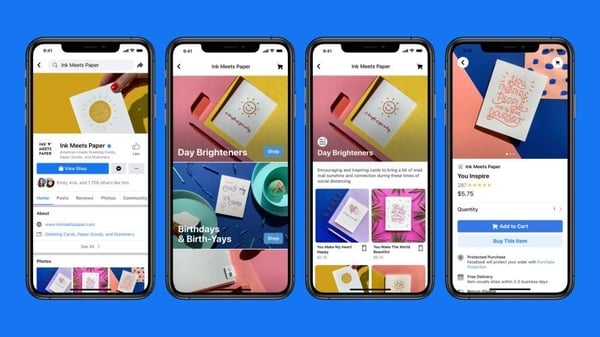
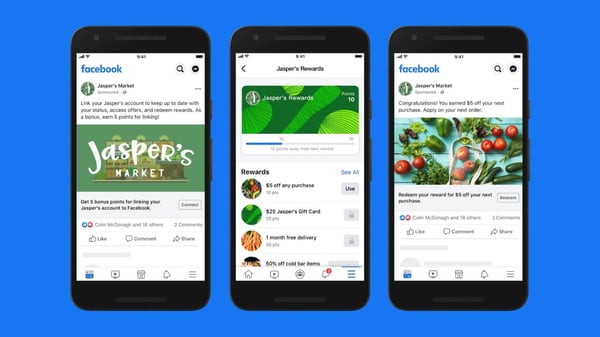
As part of the Meta family, Instagram offers shoppable posts, reels, stories, and live shopping events, all powered by the same commerce backend as Facebook Shops. Its highly visual format makes it a perfect fit for categories like fashion, beauty, and home décor.
With over 2 billion monthly active users, Instagram keeps the buying process seamless: tap a product tag, view details, and check out without leaving the app.
Users can shop in stories, posts, reels, explore section as well as on Instagram shops.
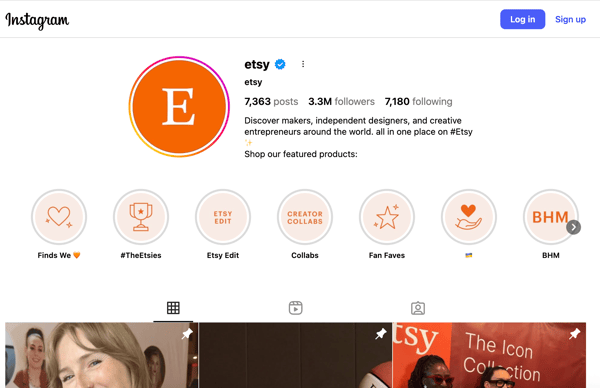
If you’re considering influencer marketing as part of your overall social commerce plans, you’ll be happy to know that you can integrate with other accounts and have them tag and sell your products from posts and stories, too.
Also owned by Meta, WhatsApp Business is a powerhouse for chat commerce, especially in regions where WhatsApp is the primary communication tool.

Brands can share product catalogs, answer questions, process orders, and share updates directly in chat. With over 2 billion users worldwide, it’s a natural fit for high-touch, personalized sales, whether you are selling a boutique service or a high-value product.
TikTok is one of the OGs of social commerce platforms, especially with its short-form video content. In fact, TikTok Shops' gross merchandise value (GMV) has skyrocketed from roughly $1 billion in 2021 to an astonishing $33 billion in 2024.
TikTok’s algorithm-driven feed is built for product discovery, and TikTok Shop allows brands to add purchase links to videos, livestreams, and creator content. Users spend an average of 95 minutes per day on the platform, giving sellers plenty of opportunities to capture attention and convert viewers into customers without leaving the app.
Amazon Live brings livestream shopping to the world’s largest e-commerce marketplace. Brands can host live product demos, answer questions, and run special promotions – often displayed on relevant product pages. During high-traffic events like Prime Day, some sellers report double-digit conversion rates from live streams.
YouTube lets brands and creators tag products in videos and livestreams, linking directly to their online store or integrated checkout. It works particularly well for tutorials, product demos, and long-form content where buyers want more detail before committing. The ads show:
You can use the system to create ads selling a single product, ads showing off multiple grouped products, or ads showing specific products to people based on their location.
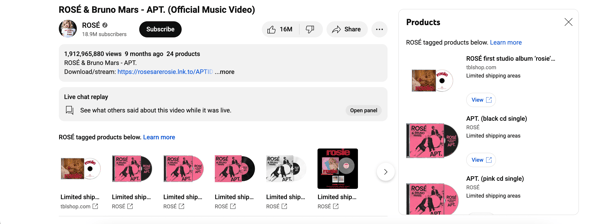
As an added benefit in all this, creating Shopping Ads on YouTube will also help you learn their system.
If your audience is on Pinterest and you’ve got a great eye for color, it’s time to fire up Pinterest’s Rich Pins and Product Pins. While they’ve been around for a few years, they’re still popular and effective for many companies and have grown in functionality.
Product Pins display real-time pricing, availability, and direct purchase links, turning casual browsing into ready-to-buy moments. With 578 million monthly active users, and 80% of weekly users say that they feel inspired by the shopping experience on Pinterest, it’s especially valuable for categories like home décor, DIY, fashion, beauty, and event planning. The platform’s search-driven nature also means your products can keep attracting buyers long after you post.

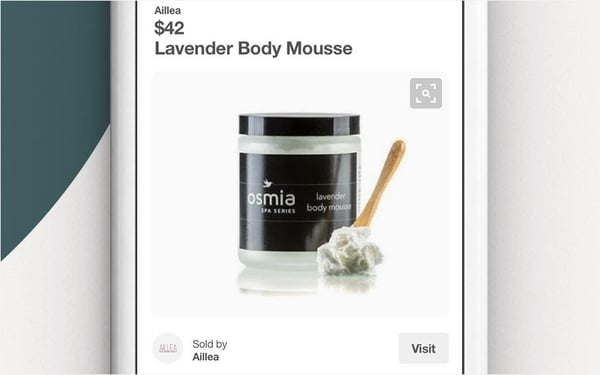
Snapchat’s AR shopping experiences allow users to virtually try on products like sunglasses, sneakers, or makeup before buying. More than 250 million users engage with AR features daily, making it a powerful option for fashion, beauty, and accessories targeting younger audiences.
Not every social commerce approach works equally well for every business. The right mix depends on your audience, your product or service, and where your buyers are most active. Instead of jumping on the newest trend, use a structured approach to match your goals to the type and platform that will deliver the best ROI.
It’s about aligning audience behavior, content format fit, conversion potential, and operational readiness. Brands with established social media programs will weigh these factors differently than those starting from scratch.
If you already have social media marketing in place:
If you’re building from the ground up:
For both scenarios:
Social commerce is only as valuable as the results it drives and without tracking, you’re flying blind. Whether you’re running shoppable posts, livestream events, or chat-based sales, measurement should start on day one so you can see what’s working, what’s not, and where to double down.
Your metrics should reflect both engagement and revenue impact:
Most major platforms offer built-in analytics to track social commerce performance:
Pair these with your e-commerce platform’s analytics (Shopify, BigCommerce, WooCommerce) to get a full funnel view from impression to order confirmation.
A viral product video means little if it doesn’t convert. Instead of chasing views alone, measure how each piece of content impacts key commercial outcomes – like total revenue, repeat purchases, or lead-to-customer conversion rates for SaaS.
Compare your performance against platform or industry benchmarks. For example, livestream shopping can deliver conversion rates as high as 30% than standard shoppable posts. Use these insights to refine your format, posting cadence, and promotional strategy.
Build a feedback loop. Every campaign should feed insights into your next one – whether it’s adjusting creative, testing different product assortments, or shifting spend to higher-performing platforms.
The right social commerce tools make it easier to manage content, connect with customers, and convert in-platform. They help businesses sell products and services directly through different social media platforms by integrating shopping features with content publishing, customer engagement, and analytics at one place.
Here are some of the top social commerce tools on G2 and what they’re best for:
You can explore real user reviews of these tools on G2, compare them by business size, industry, and use case, and choose the one that best fits your goals.
Have more questions? We have the answers.
While almost any business can leverage social commerce, it’s especially effective for industries with strong visual appeal and high engagement on social platforms. These include fashion, beauty, home décor, food and beverage, and fitness. SaaS and service-based industries can also benefit by using social commerce to sell subscriptions, book appointments, or promote digital downloads.
Traditional e-commerce typically happens on standalone websites or marketplaces, requiring customers to navigate away from social media to complete a purchase. Social commerce integrates the buying process directly into social platforms, allowing shoppers to discover, engage with, and purchase products without leaving the app. This shortens the path to purchase and can boost conversion rates.
Some common challenges include choosing the right platforms for your audience, creating content that drives both engagement and conversions, managing customer inquiries across multiple channels, and integrating social sales data into your overall analytics. There’s also the need to keep up with evolving platform features and algorithm changes.
Many platforms, like Instagram Shopping or TikTok Shop, offer integrations with popular e-commerce systems such as Shopify, WooCommerce, and BigCommerce. This lets you sync product catalogs, manage inventory, and process orders in one place. Social commerce software can also bridge the gap by connecting your store to multiple social platforms simultaneously.
Influencer marketing can significantly amplify social commerce efforts by leveraging a creator’s audience and trust. When influencers feature products in shoppable posts, live streams, or stories, their endorsements can drive immediate interest and sales – especially if they align with your target market.
Short-form video, user-generated content, and shoppable posts drive the most success. Product demos, unboxings, and tutorials build trust and show value, while influencer collaborations and livestreams create urgency and authenticity. The best-performing content feels relatable, engaging, and makes it easy to buy directly.
Social commerce isn’t just a shiny add-on to your social media strategy, it’s the bridge between brand engagement and revenue. The most successful brands treat it as part of their core sales strategy, not an experiment. That means picking the right type for your audience, using the platforms where they’re most likely to buy, and tracking performance with the same rigor as any other sales channel.
The real win? You’re not just meeting customers where they are; you’re selling to them in the exact moment they’re most inspired to buy.
If you are already not on social media, learn where your buyers spend time, how they engage, and meet them there. Start small, test what clicks, and build toward the formats and platforms that deliver real results, then double down and keep the momentum going.
Want to amplify your social commerce results? Pair it with the right influencers. Read our guide to influencer marketing to learn how to choose creators who can drive both engagement and conversions.
This article was originally published in 2020 and has been updated with new information.
Soundarya Jayaraman is a Content Marketing Specialist at G2, focusing on cybersecurity. Formerly a reporter, Soundarya now covers the evolving cybersecurity landscape, how it affects businesses and individuals, and how technology can help. You can find her extensive writings on cloud security and zero-day attacks. When not writing, you can find her painting or reading.
Since its launch in 2018, TikTok quickly became one of the hottest social media apps on the...
 by Lauren Pope
by Lauren Pope
As an e-commerce retailer, you’ve probably noticed a growing trend: shoppers drop off before...
 by Sagar Joshi
by Sagar Joshi
Consumer demand is a powerful market driver across all industries.
 by Ralf Llanasas
by Ralf Llanasas
Since its launch in 2018, TikTok quickly became one of the hottest social media apps on the...
 by Lauren Pope
by Lauren Pope
As an e-commerce retailer, you’ve probably noticed a growing trend: shoppers drop off before...
 by Sagar Joshi
by Sagar Joshi


